The first thing you will be taught when you start practicing Aikido is the “hanmi” stance. Hanmi literally means “half-body”. From a practical standpoint this means that only half of ones body is presented to an adversary. The importance of the hanmi stance cannot be overemphasised. In fact, the founder of Aikido adopted hanmi as a founding principle around which his entire art is organised!
It can often be heard in dojos that Aikido begins and ends with Hanmi, an important aspect of daily practice! Saito Sensei mentions that Aikido is the only martial art that is built upon this Hanmi position, and that when one maintains Hanmi there are no mistakes. In partner practice with the ken (sword) for example, it is possible to avoid an ai-uchi, or mutual kill situation, when one maintains hanmi.
The below two photographs (c.1938) are of Aikido Founder in the hanmi position. (Please also take note of the difference in “ma-ai”, or combative distance, between the photographs.)
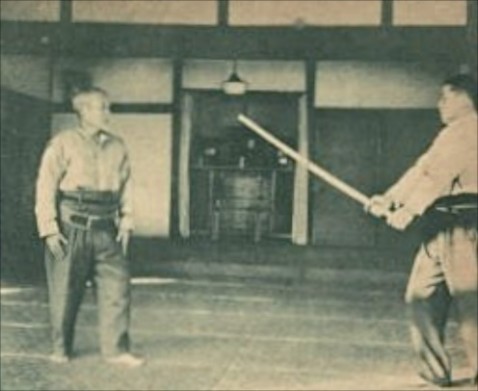
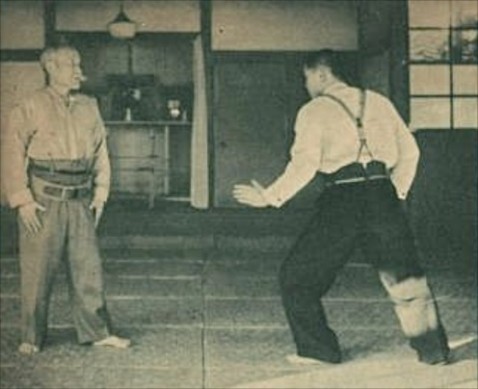
So what is this hanmi position?
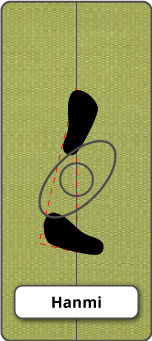
The shape of hanmi is the tri-angle. Knees are relaxed, weight is shifted naturally. The balance is between the two feet. This allows easy movement of the feet and hips, to be able to turn in any direction in a smooth, fluid, balanced way. If you do not assume the correct hanmi position, you cannot move your hips freely. The hanmi stance does not differ if one is in migi (right) hanmi or hidari (left) hanmi.
The feet are approximately shoulder width apart, or slightly larger.
It is not enough just to have your feet in hanmi position, it is your whole body that is in hanmi. Hips are approximately 45 degrees.
The founder said:
“The movements of your hips depend on the movements of your feet.” [And the movement of your hands depends on the movement of your head – but that’s a different story!]
Morihei Ueshiba O’Sensei
From Traditional Aikido: Volume 5, 1976, p.30
I suggest you position your eyes in such a way that you will see the upper rear of your partner’s right shoulder [when he\she is in right hanmi]. Your eyes are not supposed to be fixed far from or near your partner but should rather grasp him as a whole. The founder used to explain as follows:
“Don’t look at the eyes of your partner because your mind tends to be absorbed by them. Don’t look at his sword, either, because your Ki (Spirit) will get involved with it. Don’t look at him because you absorb his Ki by so doing. The essence of a real martial art lies in the buildup of magnetic power to absorb your partner as a whole. Having mastered the art, all I have to do is just stand where I am.”
The above remarks explicitly point to the ultimate stage of attainment where no posture is considered necessary in Aikido practice. Such stage, however, is far beyond the reach of beginners.
Morihiro Saito, Traditional Aikido: Volume 5, 1976, p30
Ai-hanmi vs Gyaku-hanmi
It is very useful, especially when starting Aikido, to understand the distinction between ai-hanmi and gyaku hanmi.
Ai-hanmi means “mutual stance”, where both the defender and attacker have the same foot forward.
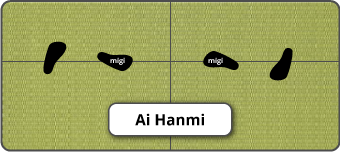
Gyaku-hanmi means “opposite stance”, where the defender and attacker have different feet forward.
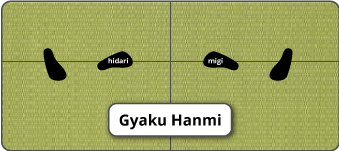
Hitoemi
(Singular Body)
Hitoemi literally means “one line or singular body”. There are possible interpretations of hitoemi, for example, considering the position of one body to another. The explanation offered here is a position of the feet. It is most notably seen in ni-no-ken-suburi (2nd ken suburi), where the right foot is brought back in such a way that the hips are completely turned parallel to attack line, in order to escape a forward thrust.
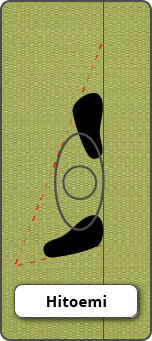
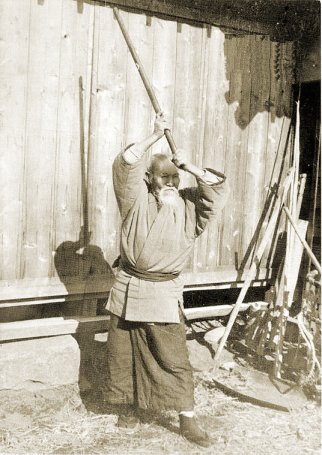
Kenkagoshi
(Fighting Stance)
Kenkagoshi is a position where the feet are positioned on either side of the forward line. This position can be found, for example, in projection techniques such as Irimi Nage.
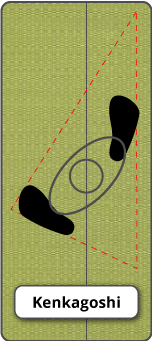
Jo Hitoemi
(Tsuki no kamae)
When holding the Jo in Tsuki-no-kamae, it is natural to have the front foot turned a little inward. This keeps the hips and body, as well as the Jo, in line with the forward direction.
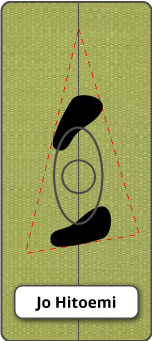
Conclusion
In conclusion, I think it is worth considering again that the ultimate stage of attainment is where no position is required at all, however from our lowly positions, daily practice must lay great emphasis on body positioning.
“The exact stance depends upon time, place, and terrain; further, it must arise in accordance with divine princilples. A good stance reflects a proper frame of mind.”
Morihei Ueshiba, Budo, 1938, translation by John Stevens, p39
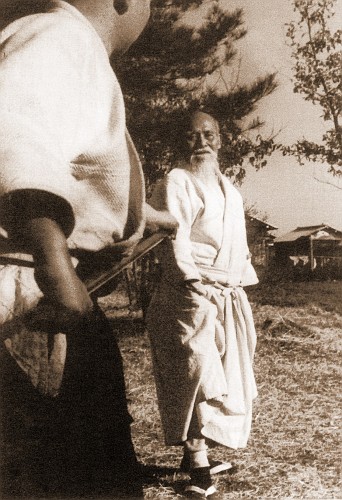

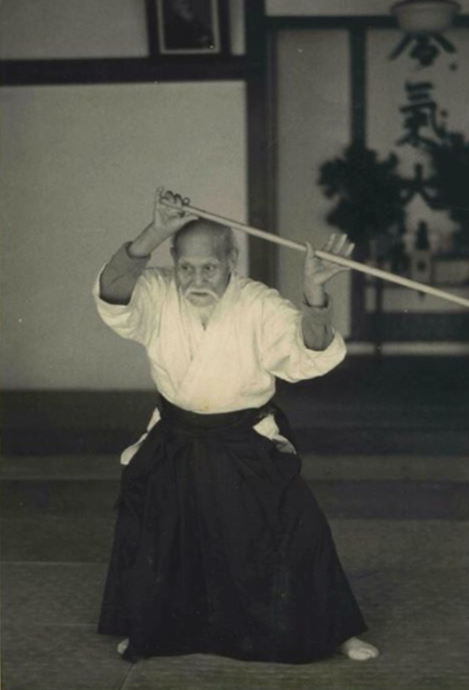

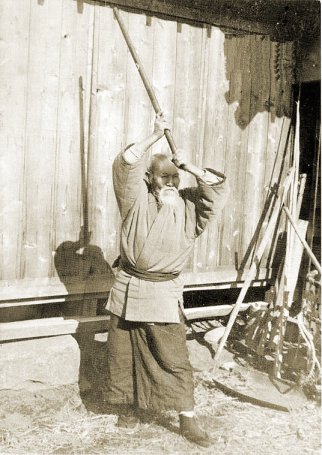
Comments